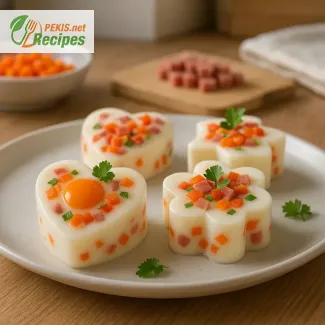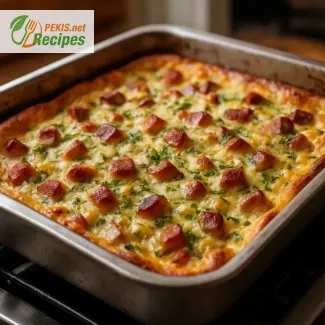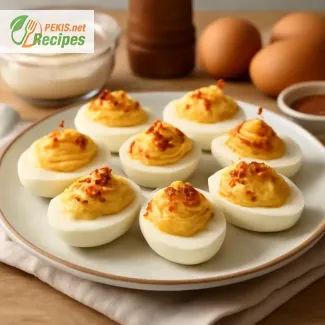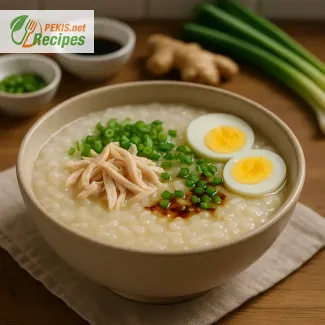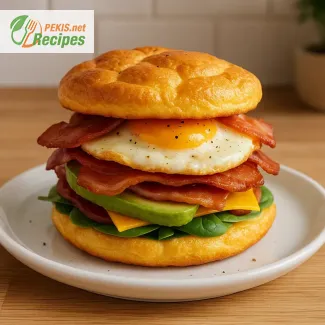
Discover the Flavorful Freedom of a Crustless Quiche
A savory classic made lighter and easier for everyday cooking
When it comes to comfort food that’s versatile, satisfying, and deceptively easy to make, few dishes rival the classic quiche. Traditionally encased in a buttery pastry crust, quiche has long been a staple of brunch menus and elegant lunches. But there’s a lighter, faster, and more modern twist gaining popularity across kitchens worldwide — the crustless quiche.
Removing the crust doesn’t mean sacrificing flavor or texture. On the contrary, a crustless quiche delivers the same rich and custardy interior, infused with eggs, cheese, and your favorite fillings, all without the extra calories or preparation time of making a pastry base. Whether you're seeking a low-carb quiche recipe, a gluten-free option, or simply a quicker way to prepare a delicious dish, this version checks every box — and more.
Why crustless quiche is the smart choice for modern home cooks
There’s a reason why more and more people are searching for the best crustless quiche recipe. This dish effortlessly adapts to different dietary needs and lifestyles. It's naturally gluten-free, especially valuable for those avoiding wheat, and it's also a brilliant solution for anyone following a low-carb diet. By skipping the crust, you reduce preparation time and remove the most carb-heavy component of the traditional quiche — all while preserving its signature silky texture and savory depth.
The simplicity of a crustless quiche also makes it ideal for busy households and weeknight dinners. With just a few staple ingredients like eggs, milk, and cheese, and whatever vegetables or proteins you have on hand, you can create a hearty, nourishing meal in under an hour. This flexibility makes it an excellent choice for reducing food waste and repurposing leftovers in a delicious and creative way.
Ingredients that elevate your crustless quiche
One of the most appealing aspects of a crustless quiche is its adaptability. Whether you prefer the earthy tones of spinach and mushrooms, the smoky bite of bacon and cheddar, or the Mediterranean brightness of feta and sun-dried tomatoes, you’re free to customize your filling combinations. The base remains delightfully consistent — creamy, soft, and packed with flavor.
Using high-quality ingredients is key. Fresh, free-range eggs provide structure and richness. A blend of cheeses, such as Gruyère, mozzarella, or goat cheese, adds depth and a creamy mouthfeel. And your choice of vegetables or meats brings variety and personal flair to the dish. Herbs like thyme, chives, or parsley not only enhance aroma but also give your quiche a vibrant finish.
Perfect for any time of day
Though quiche is often associated with brunch, a crustless quiche is perfectly suited to breakfast, lunch, dinner, or even meal prepping. It stores well, reheats beautifully, and pairs easily with a fresh salad, roasted potatoes, or even a light soup. Because it’s high in protein and can be made with low-fat ingredients, it also fits comfortably into many balanced eating plans.
Whether you’re cooking for yourself, feeding a family, or entertaining guests, a crustless quiche delivers elegance with minimal effort. It's a dish that feels both indulgent and wholesome — a rare balance in home cooking. Best of all, it requires no special skills or tools, making it ideal for beginners and seasoned cooks alike.
The ideal base for culinary creativity
Think of this recipe as a canvas. Once you master the base — a smooth mixture of eggs, milk (or cream), and cheese — you can begin to experiment. Try incorporating roasted vegetables, leftover grilled chicken, or even seasonal ingredients like asparagus, butternut squash, or zucchini. The versatility of the crustless quiche is one of its strongest assets, allowing you to transform it based on season, taste preferences, or nutritional goals.
A new essential for your weekly meal rotation
Incorporating a crustless quiche into your regular meal planning can save time, reduce grocery bills, and add variety to your diet. It’s a perfect make-ahead dish — just bake it in the evening, refrigerate, and enjoy slices throughout the week. With its combination of convenience, adaptability, and satisfying flavor, it’s no surprise that this low-carb quiche recipe is becoming a go-to favorite in homes around the world.
Whether you’re eating clean, minimizing carbs, avoiding gluten, or simply looking for a fuss-free dish packed with flavor, this easy crustless quiche recipe delivers. From the golden, cheesy top to the soft, custardy center, every bite is a celebration of balance, comfort, and smart cooking.
Step 1:
Preheat the oven to 180°C (356°F). Lightly grease a 20–23 cm (8–9 inch) round baking dish with butter to prevent sticking.
Step 2:
In a mixing bowl, whisk together the eggs, whole milk, and heavy cream until the mixture is smooth and slightly frothy.
Step 3:
Add grated cheese, chopped spinach, chopped onion, salt, and black pepper to the egg mixture. Stir gently to combine all ingredients evenly.
Step 4:
Pour the mixture into the prepared baking dish. Gently shake the dish to level the surface and distribute ingredients evenly.
Step 5:
Bake in the preheated oven for 35 minutes or until the quiche is set in the center and lightly golden on top.
Step 6:
Remove from the oven and let it cool for at least 5 minutes before slicing. Serve warm or at room temperature.
Mastering the Crustless Quiche: Enhancements for Taste, Texture, and Health
Smart upgrades and cooking tips for a flawless crustless quiche every time
The crustless quiche has gained immense popularity for its simplicity, adaptability, and lighter nutritional profile. While the base recipe is already a hit with home cooks seeking a delicious low-carb or gluten-free option, there's plenty of room to take this classic dish to new heights. Whether you're looking to refine the flavor, improve the texture, or make it even healthier, small adjustments can yield big results. In this guide, we explore the best ways to enhance your crustless quiche and avoid common pitfalls that might compromise its potential.
How ingredient upgrades enhance flavor and nutrition
The quality and type of ingredients you choose can dramatically change both the flavor and nutritional value of your quiche. Start with the eggs, the heart of this dish. Using free-range or organic eggs will not only give your quiche a richer color but also add a more robust flavor. Similarly, upgrading your cheese to options like aged Gruyère, goat cheese, or Parmigiano Reggiano provides deeper umami and complexity compared to standard cheddar.
For a creamier texture, many recipes call for whole milk and cream. You can elevate the dish further by substituting crème fraîche or even a touch of Greek yogurt, which lends tanginess and a silkier consistency. If you're aiming for a healthier version, swap full-fat dairy for low-fat milk or unsweetened plant-based alternatives like oat milk or soy cream, which blend well without overpowering the dish.
Vegetables are where the quiche becomes a canvas. Instead of relying solely on spinach, consider incorporating caramelized leeks, sautéed mushrooms, or roasted red peppers for added depth. These ingredients bring natural sweetness and complexity, balancing the richness of eggs and cheese. Additionally, pre-cooking watery vegetables like zucchini or mushrooms is crucial — it prevents a soggy result and intensifies their flavor.
Balancing texture with the right ratios and techniques
One of the most common challenges with a crustless quiche is achieving the perfect texture — firm enough to slice, yet tender and custardy. The ratio of eggs to dairy is key. A standard rule of thumb is one egg for every 60–80 ml (¼–⅓ cup) of liquid. Too many eggs can result in a rubbery consistency, while too much liquid leads to a watery quiche.
A technique often overlooked is gentle mixing. Over-beating the egg mixture incorporates too much air, causing the quiche to puff up during baking and collapse as it cools. For the best results, whisk until just combined.
Use a ceramic or glass baking dish, as metal pans can cause uneven cooking and may impart a metallic taste. Greasing the dish properly ensures easy slicing and removal, while a light dusting of grated cheese or ground almonds on the base can create a subtle crust-like barrier and enhance flavor.
Avoiding common mistakes
There are several mistakes that even experienced cooks might make when preparing a crustless quiche. One is skipping the step of draining cooked vegetables. Spinach, for example, holds a lot of water — if not squeezed thoroughly, it can leak moisture into the quiche and prevent proper setting.
Another frequent error is undercooking or overcooking. A perfectly baked crustless quiche should have a slightly firm center that jiggles a bit when moved. Overbaking leads to a dry, spongy texture, while underbaking results in a wet and unstable interior. Bake at 180°C (356°F) and always allow it to rest for 5–10 minutes after baking to let the structure firm up.
Don’t forget to season well. Because quiche relies heavily on dairy and eggs, it can easily become bland without sufficient salt or herbs. Incorporating fresh herbs like parsley, dill, or thyme adds not just seasoning but also color and aroma.
Healthier variations without sacrificing flavor
If you're watching your intake of saturated fats or calories, the good news is that you can still enjoy a deeply satisfying crustless quiche. Choose part-skim cheese or go for flavor-packed options like feta or pecorino, which allow you to use less without compromising taste. Use egg whites for part of the mixture to reduce cholesterol while keeping a light texture.
Adding fiber is another smart upgrade. Ingredients such as kale, broccoli, or even shredded carrots increase the fiber content and contribute antioxidants. Including chia seeds or flaxseeds in small quantities can also help bind the mixture and boost nutritional value.
For those sensitive to dairy, nut-based cheeses and plant creams work well, especially when combined with umami boosters like nutritional yeast or a dash of tamari. Just ensure any dairy-free ingredients are unsweetened and designed for cooking use.
Elevating presentation and serving ideas
A well-made crustless quiche is beautiful on its own, but thoughtful garnishing can make it centerpiece-worthy. Sprinkle the top with finely chopped chives, grated parmesan, or even paprika before baking for an extra visual and flavor dimension.
Serve slices alongside a light salad, roasted seasonal vegetables, or even a dollop of herbed yogurt sauce for contrast. When preparing in advance, allow the quiche to cool completely before slicing — this ensures clean portions and maintains the structure.
For a portable version, bake the mixture in muffin tins for individual mini quiches. These are excellent for lunchboxes, meal prep, or parties, and allow for multiple flavor variations in a single batch.
Customizing your crustless quiche
Experimentation is at the heart of perfecting this dish. The base recipe is a guide, but personal touches make it your own. Whether you’re inspired by seasonal vegetables, aiming for a particular diet, or cooking for guests with food sensitivities, the crustless quiche is a forgiving and flavorful platform for creativity.
Every ingredient has a purpose, and every substitution offers new potential. With a few strategic choices, your homemade quiche can rival anything served in cafés or brunch spots — and it will come with the added satisfaction of having tailored it exactly to your preferences and nutritional needs.
Allergens present in the recipe:
- Eggs
- Milk (dairy products including cheese and cream)
Contains gluten:
- No (This recipe is naturally gluten-free)
Suggestions for allergen-free modifications:
- Replace cow’s milk and cream with unsweetened oat milk and plant-based cooking cream to avoid dairy.
- Use dairy-free cheese made from coconut oil or cashew for a vegan-friendly version.
- Ensure all packaged ingredients (especially plant-based substitutes) are certified gluten-free.
- Vitamin A – 780 µg: Supports eye health and immune function
- Vitamin B12 – 1.2 µg: Essential for nervous system and red blood cell formation
- Calcium – 210 mg: Promotes bone strength and muscle function
- Iron – 2.1 mg: Important for oxygen transport in the blood
- Magnesium – 30 mg: Supports muscle and nerve function
- Potassium – 280 mg: Helps regulate fluid balance and blood pressure
- Lutein & Zeaxanthin – 1.2 mg: Protect eye tissues from oxidative stress
- Beta-carotene – 1.6 mg: Converted into vitamin A, supports vision and skin health
- Quercetin (from onion) – 5 mg: Acts as an anti-inflammatory and may support heart health
- Vitamin E – 1.8 mg: Protects cells from oxidative damage
